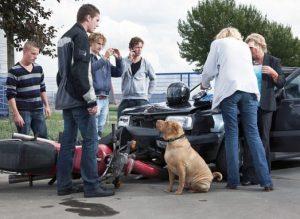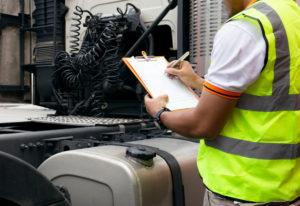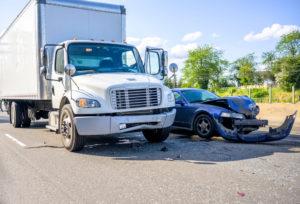
When a semi-truck collides with a car, the outcome is often catastrophic. According to the Insurance Institute for Highway Safety (IIHS), tractor-trailer trucks can weigh as much as 30 times more than passenger cars. It is no surprise that a truck crash of this kind can cause severe injuries or death.
According to the U.S. Department of Transportation’s Large Truck Crash Causation Study (LTCCS), 10 percent of semi-truck crashes are same-direction, sideswipe accidents. These happen when a driver drifts into an adjacent lane or changes lanes without looking, and the sides of the two vehicles collide.
Truck Drivers Are Responsible for Checking Their Blind Spots
Sideswipe collisions often occur when tractor-trailer drivers forget to check their blind spots or do not do so carefully. Trucks have larger blind spots than passenger vehicles, so it is easy for small cars and motorcycles to disappear inside them.
The four main blind spots on an 18-wheeler are:
- One directly behind the vehicle
- One directly in front of the vehicle
- One on either side of the vehicle next to the side mirrors
Commercial truckers receive training on surveying surrounding traffic and checking their blind spots before turning or changing lanes. Unfortunately, this does not always happen safely.
For a free legal consultation, call 800-537-8185
Why Would a Truck Driver Not Check Their four Blind Spots?
A commercial truck driver may fail to check their blind spots for several reasons, such as:
- Fatigue
- Distractions in the cab
- Mental distractions
- Drug or alcohol use
- General carelessness
In some cases, the driver may glance at their mirrors before changing lanes to pass, move over to turn, or drift into an adjacent lane. However, this is not enough to uphold their duty to ensure the lane is clear.
Failure to appropriately clear a lane before moving into it may be considered negligence if it causes a crash. This means the driver and their employer would likely be financially responsible for any injuries that occur.
These areas are sometimes referred to as “no-zones” because drivers cannot always count on commercial truck drivers who may have been on the road for hours without rest. The best option, when possible, is to just say no to remaining in any of these zones for any length of time.
Tips to Avoid Blind Spot-Related Accidents with 18-Wheelers
At 10 percent of all truck crashes, sideswipes are the second most common type of tractor-trailer accident—just behind rear-end collisions. However, rear-end collisions account for 23 percent of all 18-wheeler wrecks, according to the LTCCS. This data tells us that truck drivers commonly move into adjacent lanes without properly clearing those lanes.
The best way you can protect yourself from these accidents include the following:
Maintain a Safe Following Distance
Trucks have a blind spot directly behind them. If you tailgate an 18-wheeler, the driver may not know you are there. You also have a shorter stopping distance, which increases your risk of causing a rear-end collision. You should maintain plenty of distance behind a large truck, staying back far enough so you can see the truck’s mirrors. If you cannot see their mirrors, they cannot see you.
Do Not Cut off Tractor-Trailers
Never cut in front of a large truck, especially at interstate speeds. Trucks cannot stop as quickly as a passenger car could, and they cannot see you if you are too close to the front of their vehicle. You should not change lanes in front of a truck until you can see both of its headlights in your rear-view mirror. This will help you avoid the blind spot directly in front of the truck.
Stay a Sufficient Distance Ahead of Trucks
If a truck driver tailgates you, change lanes and let the truck pass. Tractor-trailers require a significant stopping distance, so being followed too closely dramatically increases the risk of getting rear-ended. It could also put your vehicle in the blind spot directly in front of the 18-wheeler.
Be Cautious When Overtaking a Large Truck
The largest blind spot on a tractor-trailer is on its right side. For this reason, you should pass a large truck only on its left side. Make sure you signal your intentions before overtaking the vehicle so that its driver knows you will pass through their blind spot.
Click to contact our personal injury lawyers today
Speak with a Lawyer from Morris Bart, LLC, About Your Truck Accident
Unfortunately, all it takes is one mistake from a truck driver to cause a crash that results in devastating injuries. If you were hurt or lost a family member because of a negligent trucker, a truck crash attorney from the Morris Bart law firm may be able to help.
We provide free case reviews for truck accident victims across the Gulf South in Alabama, Arkansas, Louisiana, and Mississippi. Call (800) 537-8185 to get started with your complimentary consultation with one of our attorneys.
Questions?Call 800-537-8185
to find a Morris Bart office near you.





